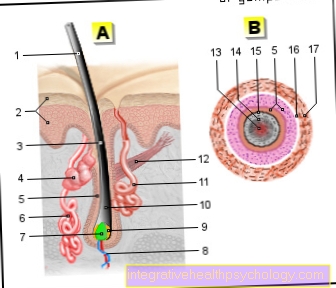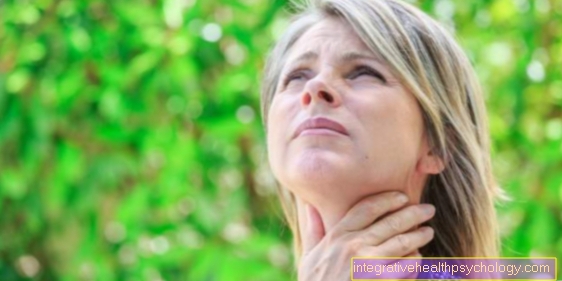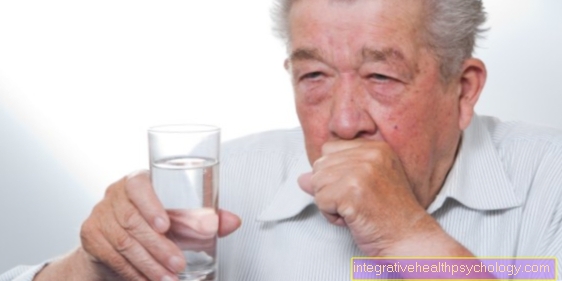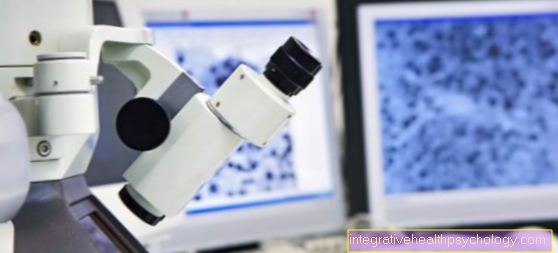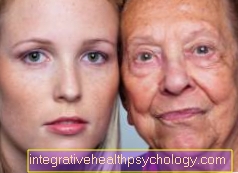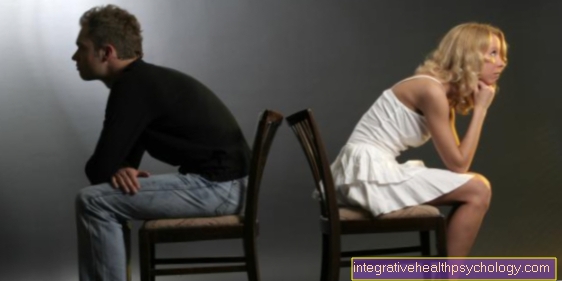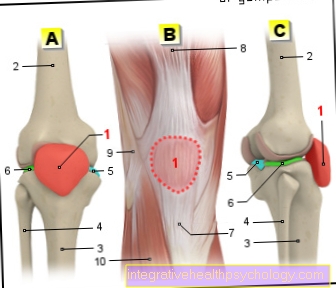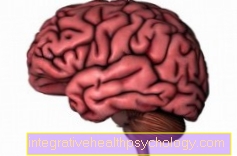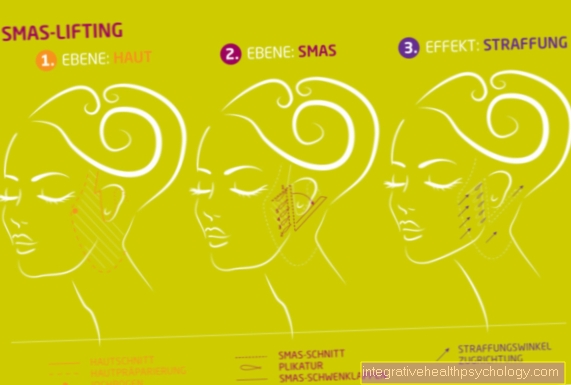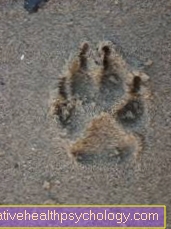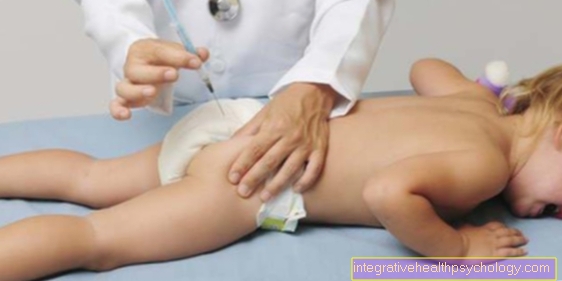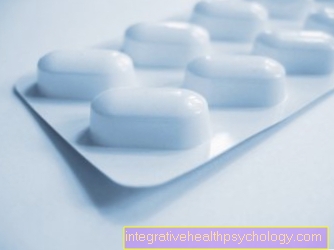Hirsutism
Definition of hirsutism

Hirsutism describes the growth of hair with male expression in women.
If there are other signs of masculinization such as a deep voice, acne, male physique and hair loss according to the male distribution pattern, then one speaks of androgenization.
In hirsutism, only the area of hair growth controlled by sex hormones is affected: the beard, breasts, chest, armpits, midline of the abdomen and thighs. Lower legs, arms and soft downy hair on the face, on the other hand, are independent of the sex hormones.
You can find detailed information on the topic here: Depilation
Origin of hirsutism
Both the Hirsutism as well as the Virilization (Masculinization) are formed with excess androgen (Sex hormone) with the woman. Female androgen production can be increased for the following reasons:
- ovarian causes: The ovaries (Ovaries) produce too many Androgens because of a Tumor, hyperthecosis (Change of structure) or polycystic ovarian syndrome:
You can find more about this under our topic: Polycystic Ovarian Syndrome. - adrenal causes: Both a tumor of the Adrenal glands as well as a adrenogenital syndrome can lead to excess hormones
- Hirsutism can also be caused by obesity, certain medications, after the menopause, or in families
Diagnosis
Aim at Hirsutism is it, with the help of Laboratory diagnostics Detect the excess of the sex hormone and find out where it comes from.
Hirsutism Score
In which Hirsutism Score it is a point system that is used by Ferriman and Gallwey was developed in 1961.
Hence the score is also called Ferriman-Gallwey Score designated. It is used to objectively assess the severity of hirsutism. For this purpose, the body is divided into nine individual body parts, which are then viewed individually and given different point values depending on the amount of hair.
These range from 0 points (= no hairiness) to 4 points (= maximum hairiness). All points from the different areas of the body are finally added to a final sum. Hirsutism is present from a value of 7 points.
Location: upper lip
- Little hair on the outside (Score 1)
- Small beard on the outside (Score 2)
- Mustache almost to the midline (Score 3)
- Beard to the center line (Score 4)
Location: chin
- A few hairs (1)
- Hair accumulation (2)
- Complete hair blanket (3)
- Dense complete hair cover (4)
Location: chest area
- Some hair around the nipples (1)
- Hair in the center line (2)
- 75% covered (3)
- completely covered (4)
Location: back
- Single hair (1)
- Multiple hair (2)
- Complete hair blanket (3)
- complete, thick hair cover (4)
Location: loin
- Sacral hair pad (1)
- Cushions with lateral expansion (2)
- 75% covered (3)
- complete hair cover (4)
Location: upper abdomen
- Little hair in the middle line (1)
- Increased hair in the midline (2)
- half covered (3)
- completely covered (4)
Location: lower abdomen
- Little hair in the middle line (1)
- Dash in the middle line (2)
- Band of hair (3)
- upside down v (4)
Location: upper arm
- Discreet hair (1)
- no closed hair blanket yet (2)
- Half hair blanket (3)
- Complete hair blanket (4)
Location: thigh
- Discreet hair (1)
- no closed hair blanket yet (2)
- Half hair blanket (3)
- Complete hair blanket (4)
Treatment of hirsutism
Therapy for hirsutism depends on the underlying cause.
If it is a hormonal disorder, it can be combated with special medication. For example, the adrenal form is treated with the glucocorticoid "dexamethasone", while the ovarian form is treated with ovulation inhibitors (drugs that suppress ovulation). Medicines that work against male hormones can also help. These so-called antiandrogens include cyproterone acetate, chlormadinone acetate and flutamide. A cream with the active ingredient eflornithine can be used as a support. This was specially developed to prevent excessive hair growth on the face and, by inhibiting an enzyme, slows hair growth in unwanted areas.
If no organic cause for the hirsutism could be determined, general cosmetic treatments can be used, since many women are exposed to a high level of suffering due to the annoying hair growth. Possible measures are hair bleaching or laser epilation.
If the causes of the hirsutism cannot be remedied, one tries to suppress the sex hormone production with the help of drugs.
Please also read our topic: Strong hair growth in women


